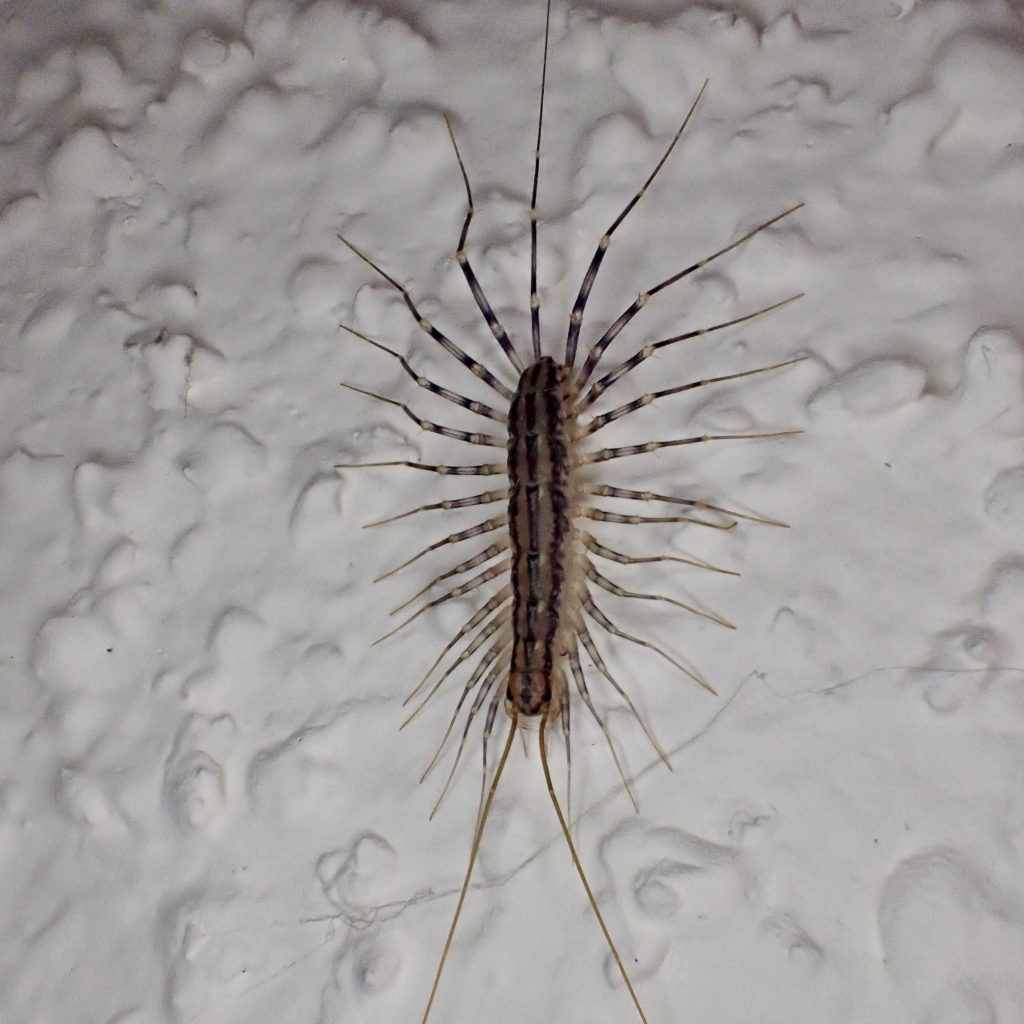
If one doesn’t like bugs in their home, the one bug they should love is Scutigera coleoptrata! Before I write about this particular species, since this is my first profile of anything in the class Chilopoda, I think a few words on centipedes in general are in order. For one thing centipedes and millipedes are not that closely related. They are in the same subphylum, Myriapoda, but humans and lampreys are in the same subphylum, Vertebrata, and no one would ever confuse the two (which isn’t to say that some humans are not life-sucking parasites, but I digress). The easiest way to tell centipedes from millipedes is that centipedes have a single pair of legs per body segment, and millipedes have two sets per segment (hence the name Diplopoda, ‘two legs’, for this class of arthropods).
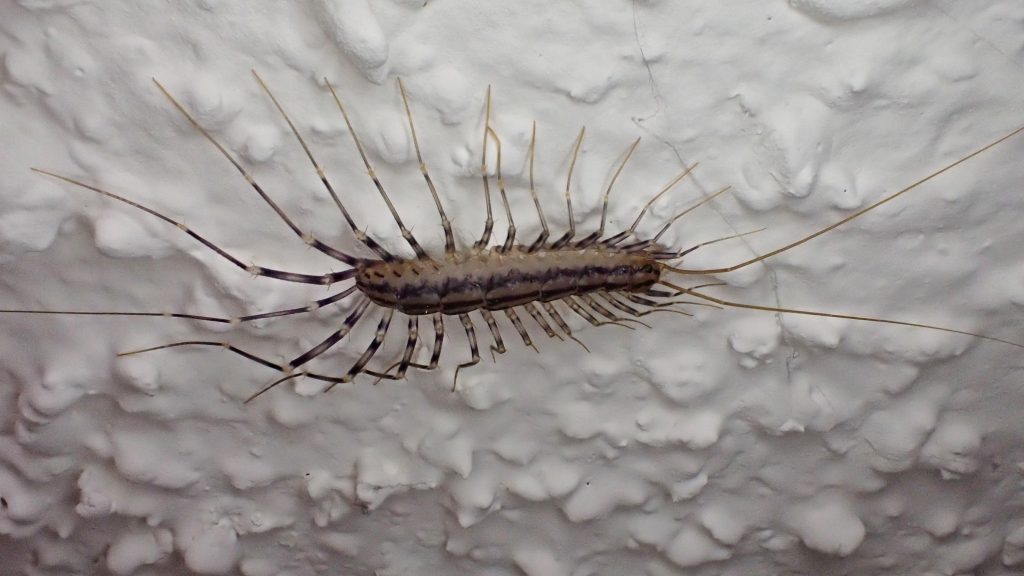
All centipedes are carnivores and mostly hunt other invertebrates, although some large Scolopendromorphs prey on vertebrates. Centipedes are venomous, and produce and inject their venom with a pair of modified front legs called forcipules. They are the only class of animals that have evolved forcipules. Though they are venomous their venom is not in itself known to be deadly to humans, although a sting (because the venom is administered through the forcipules rather than the mandibles it is not a bite) can be very painful, particularly in the case of large Scolopendromorphs. Medical issues only arise from either an allergic reaction, or infection of the wound site. The House Centipede is seldom implicated in problematic stings, because they inject relatively small amounts of venom, and because their forcipules are usually too small to penetrate our skin. And because they tend to flee rapidly when threatened.
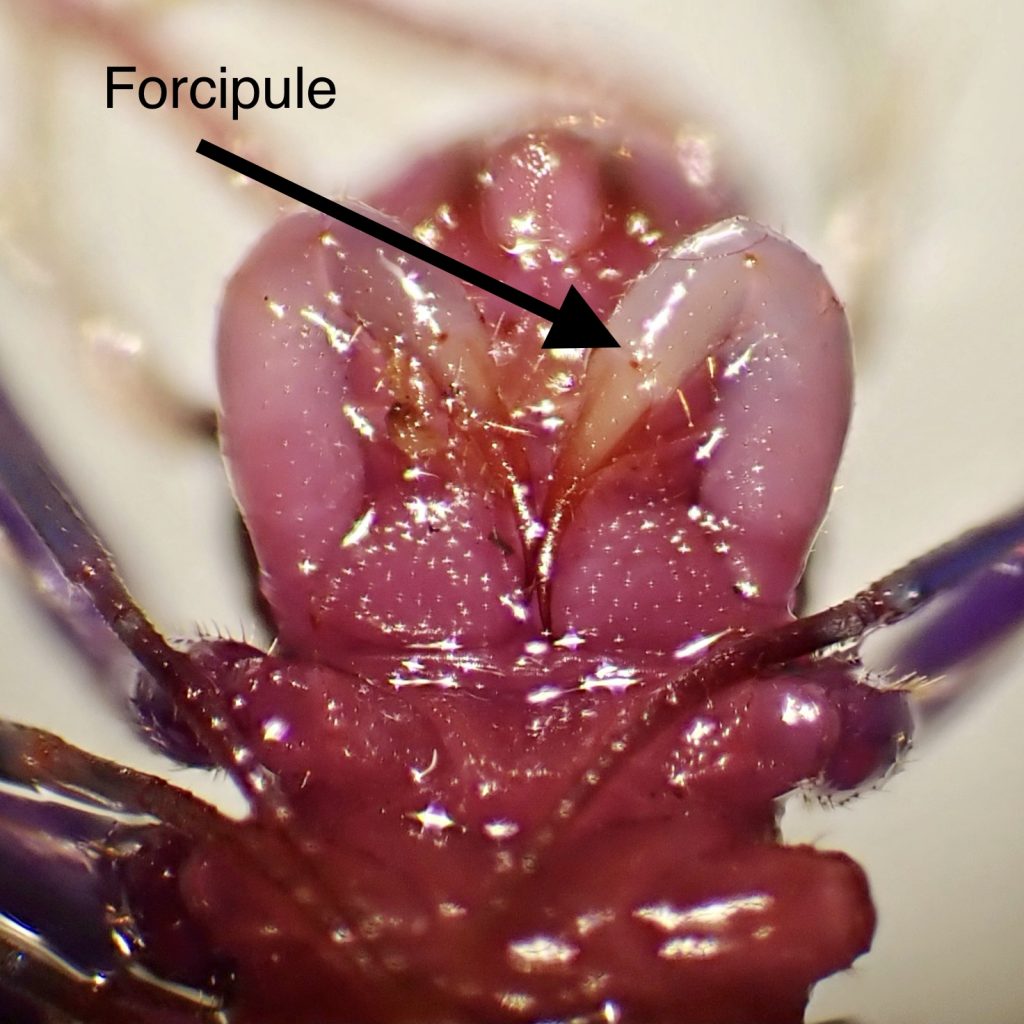
Many people find Scutigera coleoptrata to be a particularly creepy bug, and their plethora of long legs, coupled with that speed, are big reasons why. And they are fast! At roughly 16” per second they are considered to be the fastest arthropod on earth. One of the reasons why they are able to attain such speed is that the way the legs get shorter towards the head prevents the posterior legs from becoming entangled with those in front of them when they are running. Another is that House Centipedes have unique-among-chilopods lung-like spiracles that increase their oxygen consumption and, along with the presence of hemocyanin (another unique-among-chilopods feature) in their hemolymph, enable them to oxygenate fully no matter the activity level. And that speed, along with eyes that are unusually functional for a centipede, make them very effective predators of many of the often unwanted creatures we share our living space with, things like cockroach nymphs, silverfish, bristletails, firebrats, flies, booklice, earwigs, spiders, and fleas. They are rapacious, and when hunting is good, are known to capture several prey before stopping to dine. These are the reasons why, if you dislike having bugs in your house, you should love having House Centipedes.
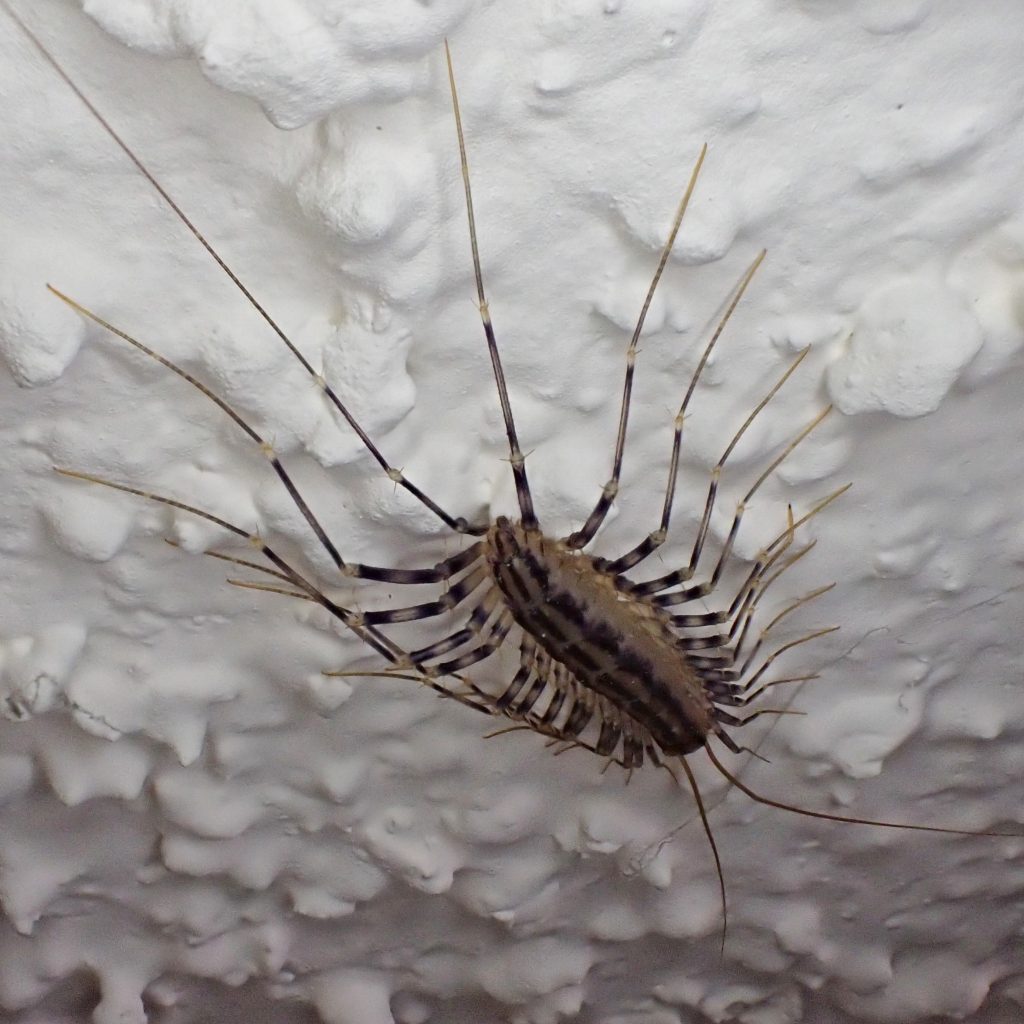
Scutigera coleoptrata, like all centipedes, lack a waxy covering to their exoskeleton. In conjunction with an inability to close their spiracles, exacerbated in the case of the House Centipede by the greater surface area of their lung-like spiracles, this leads them to lose moisture easily, which is why all centipedes are primarily found in humid areas, and why Scutigera coleoptrata prefer to live indoors and are found mostly in the damper parts of our homes, such as basements, bathrooms, laundry rooms, etc. These are also better hunting grounds, because many of their prey species prefer higher humidity as well.
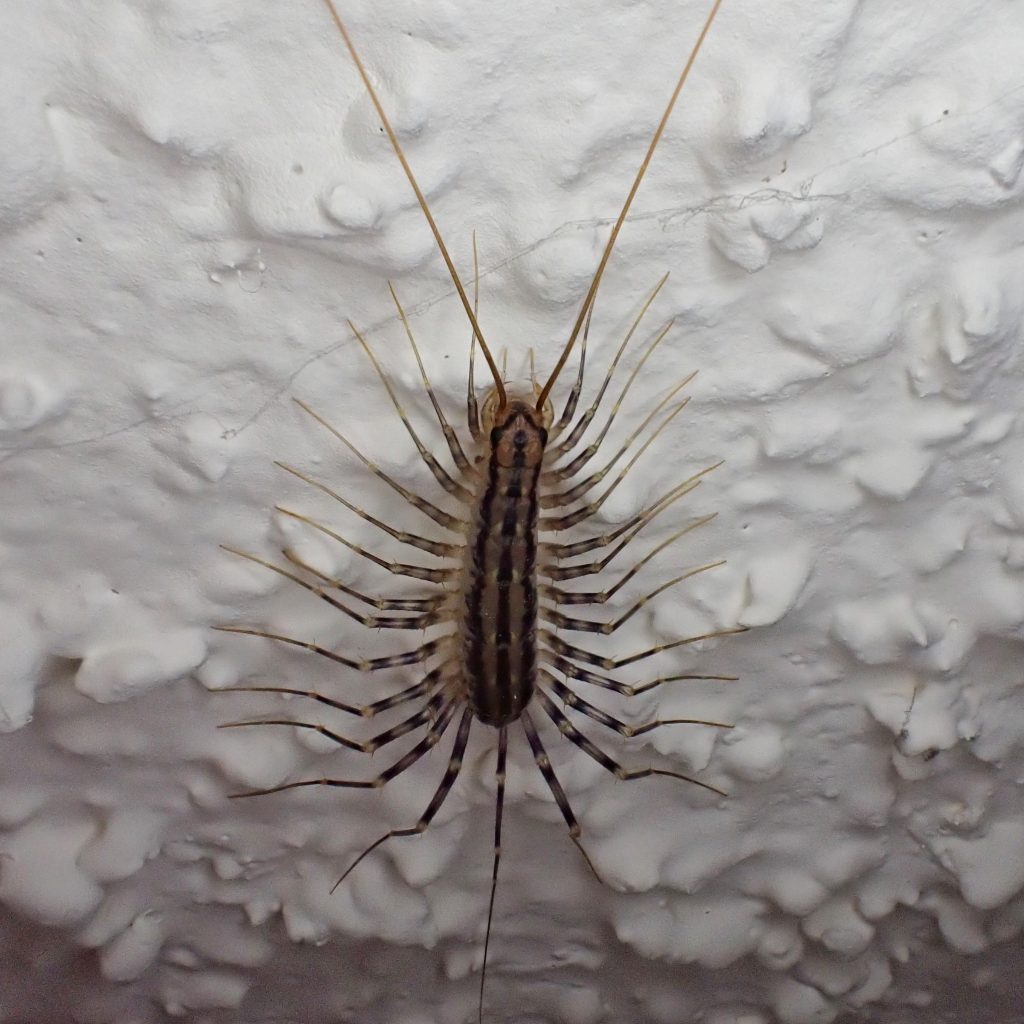
House centipedes are believed to be native to the Mediterranean region, but after conquering Europe and Asia it was inevitable that it would cross the sea during trade with the New World, and it had made it to North America by at least the early 1800s. It has since followed westward migration and can now be found continent wide. I am just skimming the surface of these fascinating creatures. For anyone whose interest is piqued I highly recommend reading more about Scutigera coleoptrata here, and here.
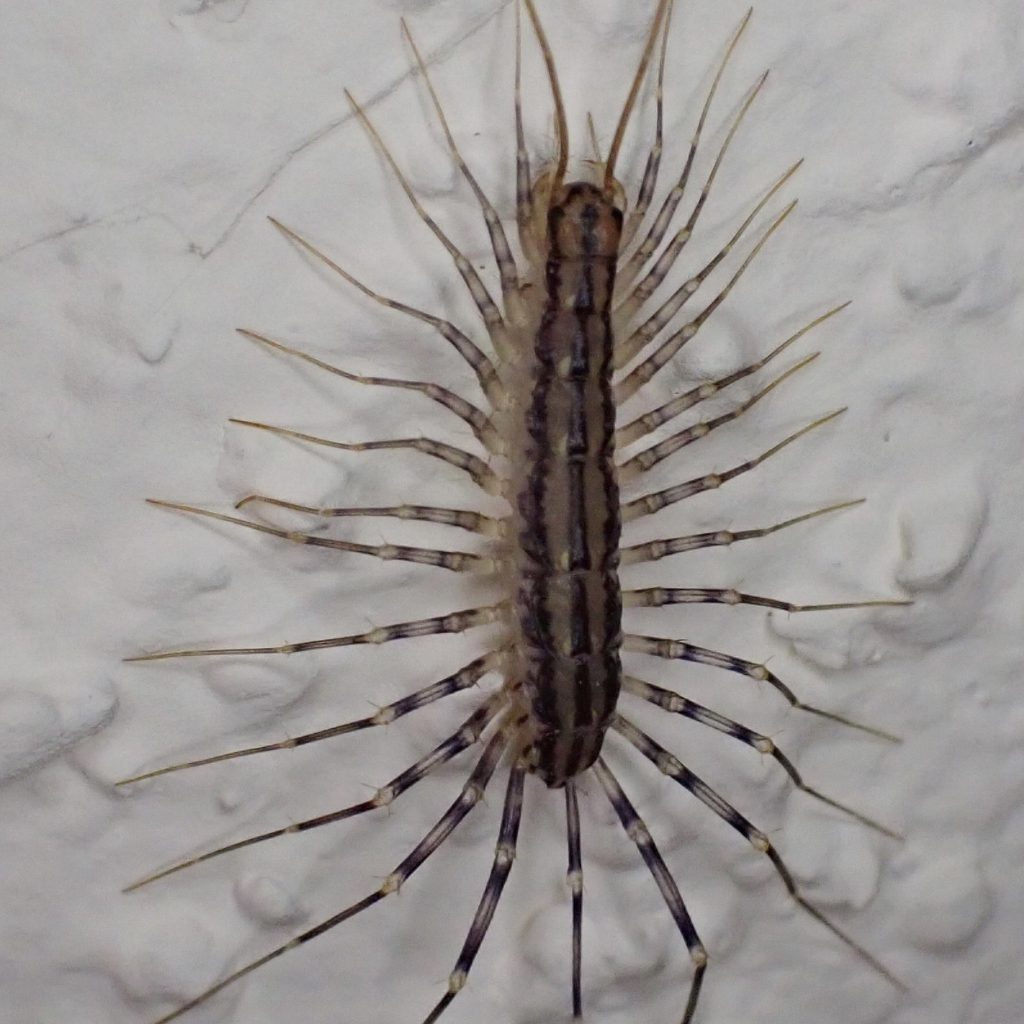
Description– Medium sized (25-30mm body length- total length including antennae and hind legs may be up to 4”) centipede with 15 pairs of long, banded legs that get shorter moving towards the head; body is yellowish brown, triangular rather than flattened, and there are 3 dark parallel lines that run the length of it; antennae are very long;
Similar species– None; other centipedes have flattened bodies and shorter and/or more legs.
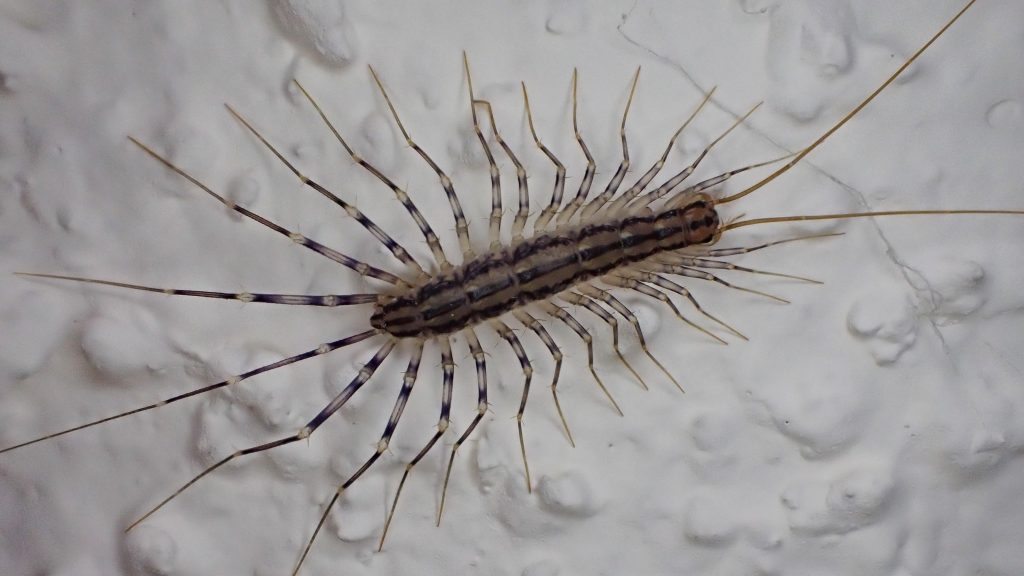
Habitat-Primarily in urban areas, and usually indoors in higher humidity areas, although they may be found outside during the warm months, where they are usually encountered under boards, logs, rocks, and other cover.
Range-Native to the Mediterranean region, now nearly cosmopolitan in residential sections of the temperate parts of the world; found region wide in appropriate habitat.
Eats-Spiders, silverfish, earwigs, flies, and virtually any other arthropods small enough to be subdued.
Eaten by-Brave and careful insectivores of all classes
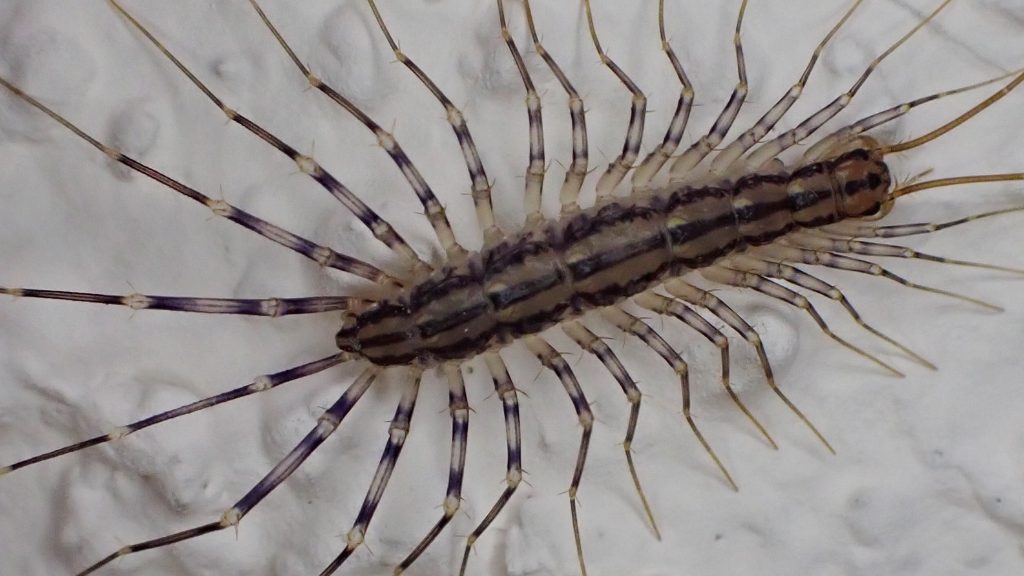
Reproduction-Reproduction only happens during the warmer part of the year in our region; Males seek a mate by tapping with their tentacles, searching for pheromones; when a receptive female is found the male spins a silk pad upon which to place a sperm packet, then attempts to coax the female into a position where she can take it in; eggs are laid in soil or in cracks in floors and foundations, then covered with a sticky exudate; females lay an average of 63 eggs, and may lay up to 150; hatchlings have only 4 sets of legs, but add a segment, and therefore another pair of legs, at the first moult, and two segments per moult thereafter, until they reach 15 pairs; each moult takes 30-60 days; total lifespan is thought to be around 3 years.
Adults active-Year around; exclusively indoors from the first to the last frost in our region.
Etymology of names–Scutigera is from the Latin for ‘shield bearing’, because of the shape of the plates on the last several segments. The specific epithet coleoptrata was coined by Linnaeus because he thought they had a thorax similar to a beetle’s (Coleoptera).
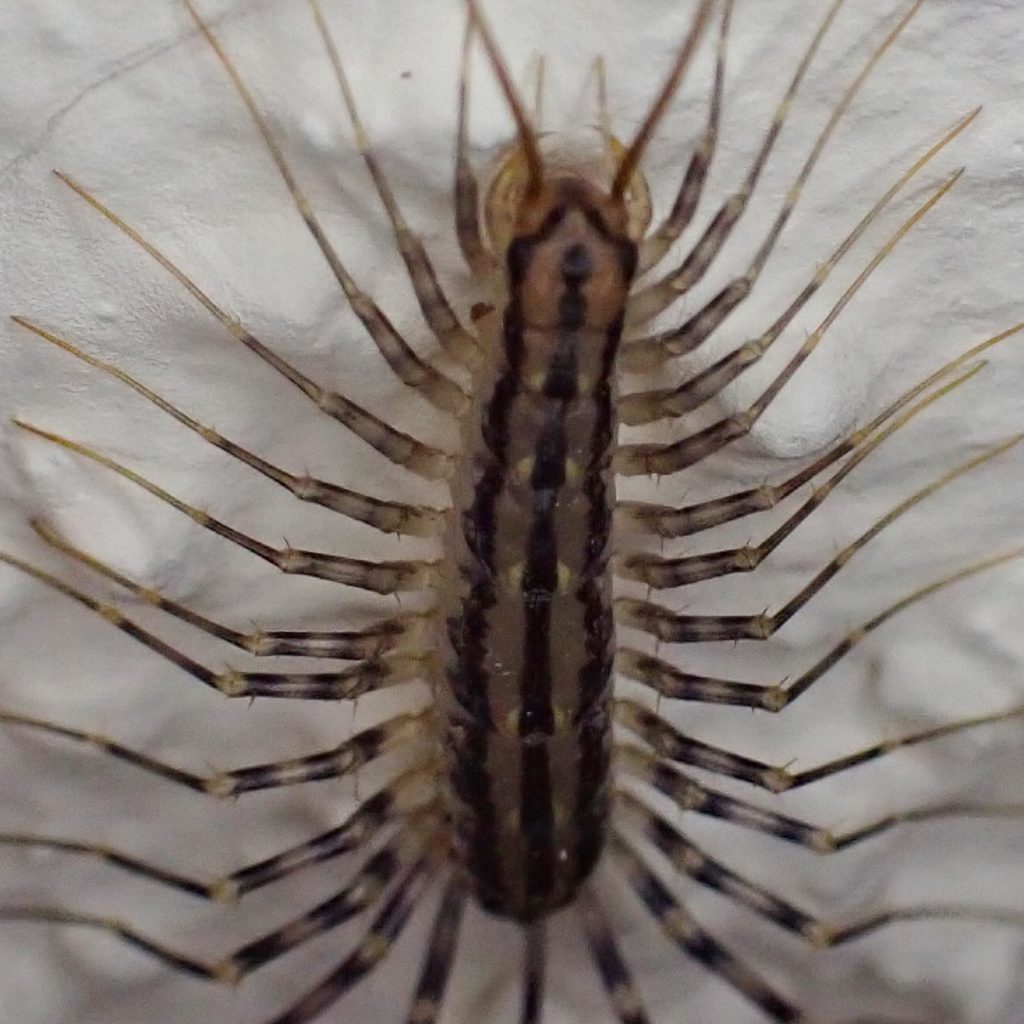
https://extension.psu.edu/house-centipedes
https://bugguide.net/node/view/25
https://mdc.mo.gov/discover-nature/field-guide/house-centipede
https://www.insectidentification.org/insect-description.php?identification=House-Centipede
https://animaldiversity.org/accounts/Scutigera_coleoptrata/
https://en.m.wikipedia.org/wiki/Scutigera_coleoptrata
https://en.m.wikipedia.org/wiki/Centipede
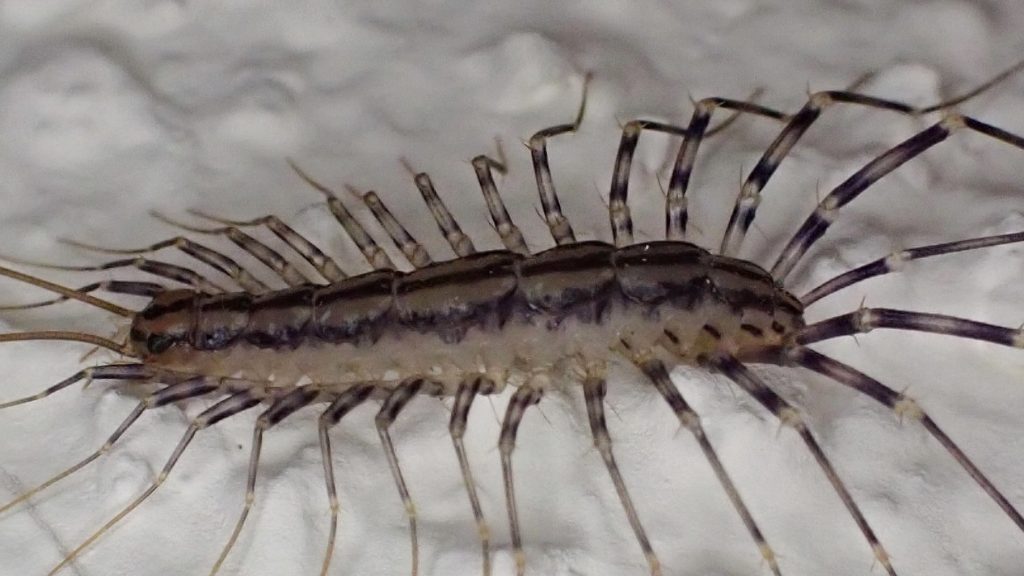
Excellent article Dan!
BTW (and back in the day), there was a large thriving population of these guys in the old basalt quarry on the north end of Long Meadow in the Carty Unit. One day I’m sure I saw over fifty.
It’s been at least 15 years since I’ve been out in that way! If it’s legal, you and I should revisit it sometime. I’d also like to see if the Anostraca (Fairy Shrimp) are still in the larger mud puddles and the tannin pond near Beaver Point. I still swear (based on size alone) there are two species out there, although I only keyed out one individual.
TTYL
Yes, we should definitely check that out!
Lovely article, thank you! I lived on Kaua’i where centipedes are huge, but not aggressive at all. They definitely prefer to flee rather than fight. I was stung once, but it was truly an accident, not the centipedes fault at all. They have a fruit there called Noni and topically it relieves the sting almost immediately. I felt a lot of affection for them, very sweet creatures.
Thank you for your lovely comment!
Good entry. Educational. I have forwarded it on to several people with diverse interests.
Thank you!
I do not like creepy crawly anything!! But if this little guy I just found in my home casually taking a stroll through my kitchen loves to dine on spiders and alike I have no problem keeping him around👍
They are a valuable bug!